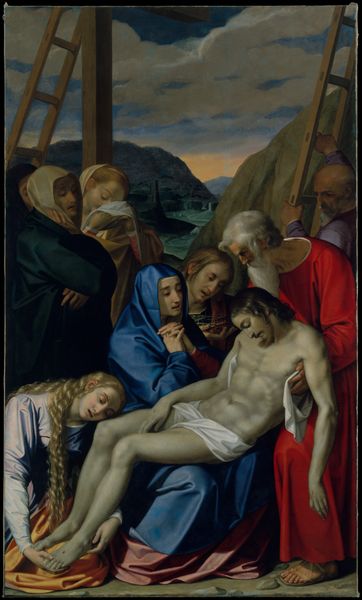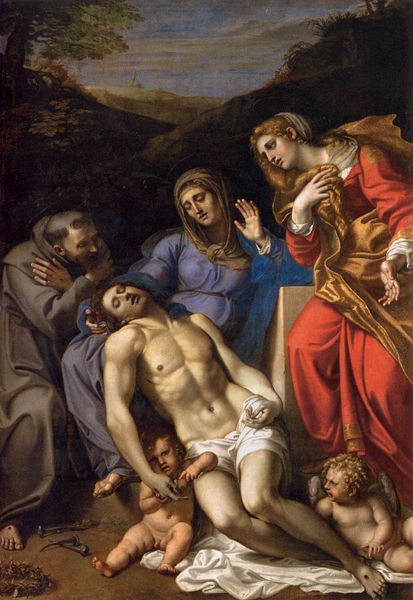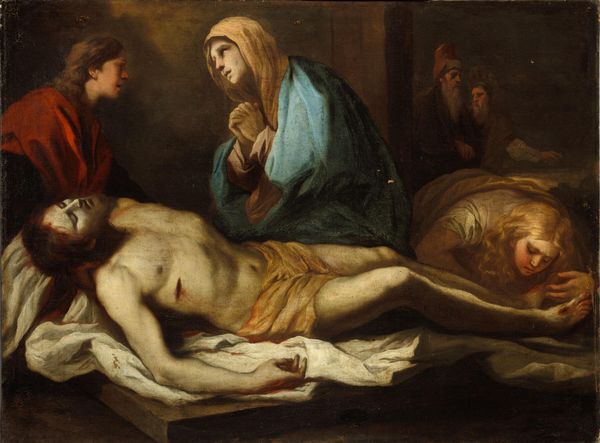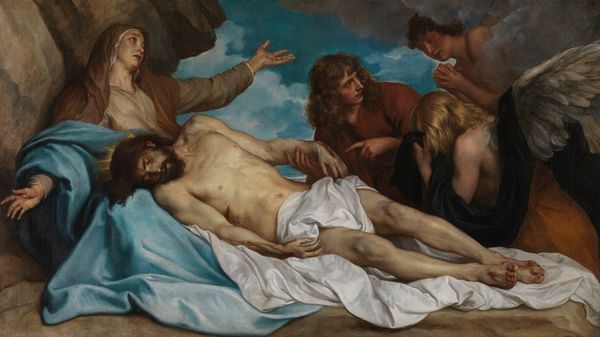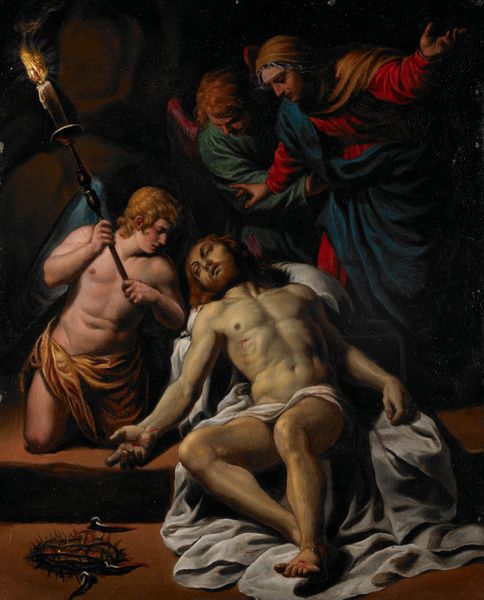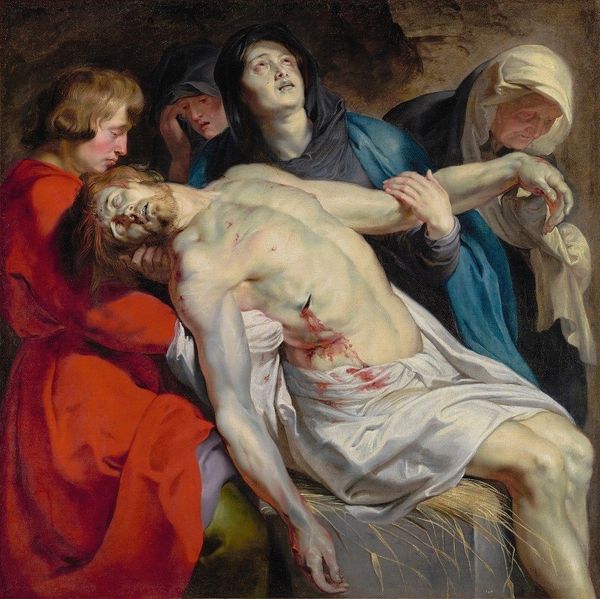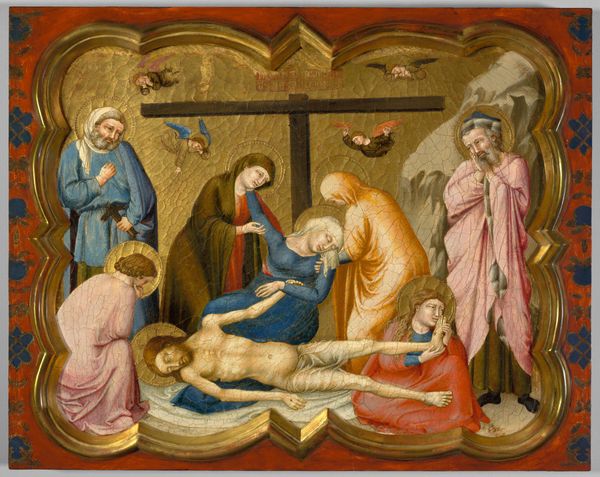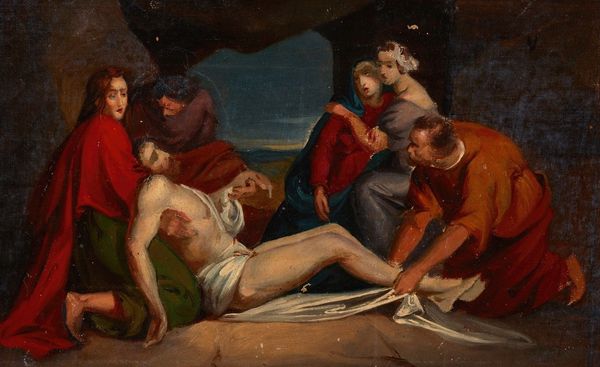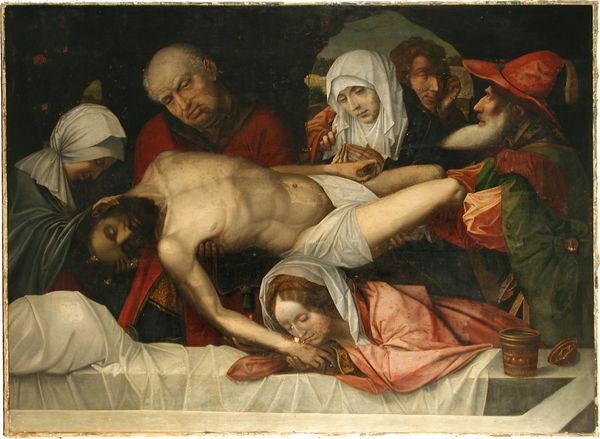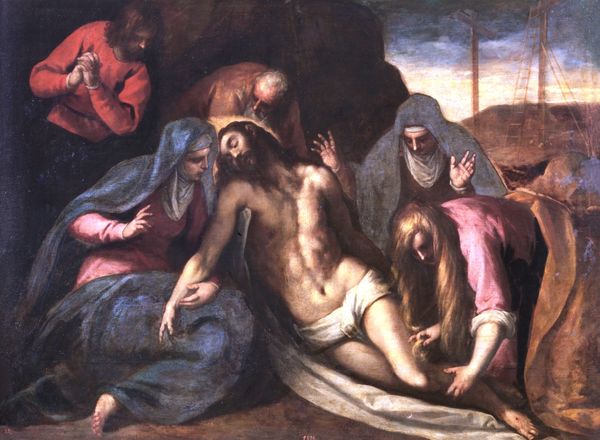
oil-paint, fresco
#
allegory
#
narrative-art
#
baroque
#
oil-paint
#
landscape
#
figuration
#
fresco
#
oil painting
#
history-painting
#
christ
Dimensions: 10 3/16 × 7 3/4 in. (25.9 × 19.7 cm) Framed: 17 3/4 × 15 3/4 × 1 1/2 in. (45.1 × 40 × 3.8 cm)
Copyright: Public Domain
Curator: Here we have Juan Rodríguez Juárez’s "The Entombment of Christ," painted between 1697 and 1707. Look how the figures are arranged. Editor: It's immediately striking, isn't it? The scene has this very somber, weighty feel. All these figures crowded around, their faces filled with grief. It's very affecting, though a little theatrical, like a stage play. Curator: I agree. What's interesting to me is how Juárez merges the drama with, almost, everyday materiality. Notice the roughness of the hewn stone of the tomb itself. He really focuses on the weight and presence of things. And see the glint of light off the water, collected there... Editor: Yes! You can almost feel the chill of the stone. And it's so deliberate, the way that stark material reality collides with the divine. Baroque art is full of objects, you see... What materials were accessible to the artist during this historical moment and what symbolic meanings could those things take on when situated next to Christ. How might people consume something so somber at that time. Curator: I love how you pick up on the accessibility of objects! I wonder, though, does that heighten the drama? Or perhaps domesticates it? This is so personal – almost claustrophobic, which clashes against the dramatic skyline with crosses atop Golgotha. Editor: Exactly! The historical context – who made it, how it was made, what materials were available – infuses the emotions being conveyed in this deeply affecting image. But do you feel the level of craft, with which it has been made, serves a deeply devout purpose, allowing everyday people to identify with this divine being? Curator: Definitely. We have the intersection of the mystical with real-world practicality – the artist shaping materials and, simultaneously, our hearts and minds. But I think you and I agree on how moving it is to have witnessed a new interpretation that's available to us today because the artist left a lasting impact centuries ago. Editor: Precisely! It’s a compelling piece to observe these questions of grief and production. Thank you for sharing such insights, what a conversation!
Comments
No comments
Be the first to comment and join the conversation on the ultimate creative platform.
